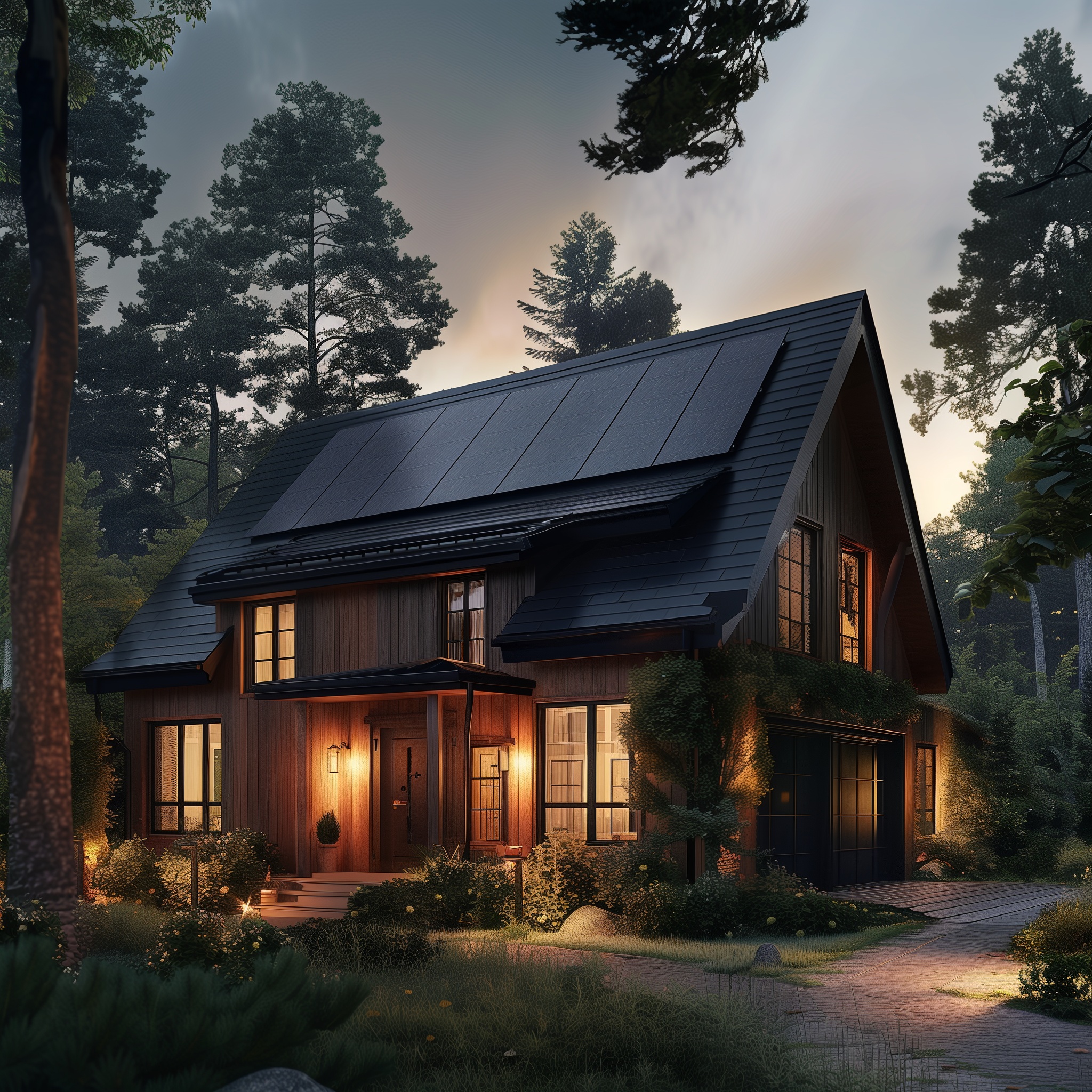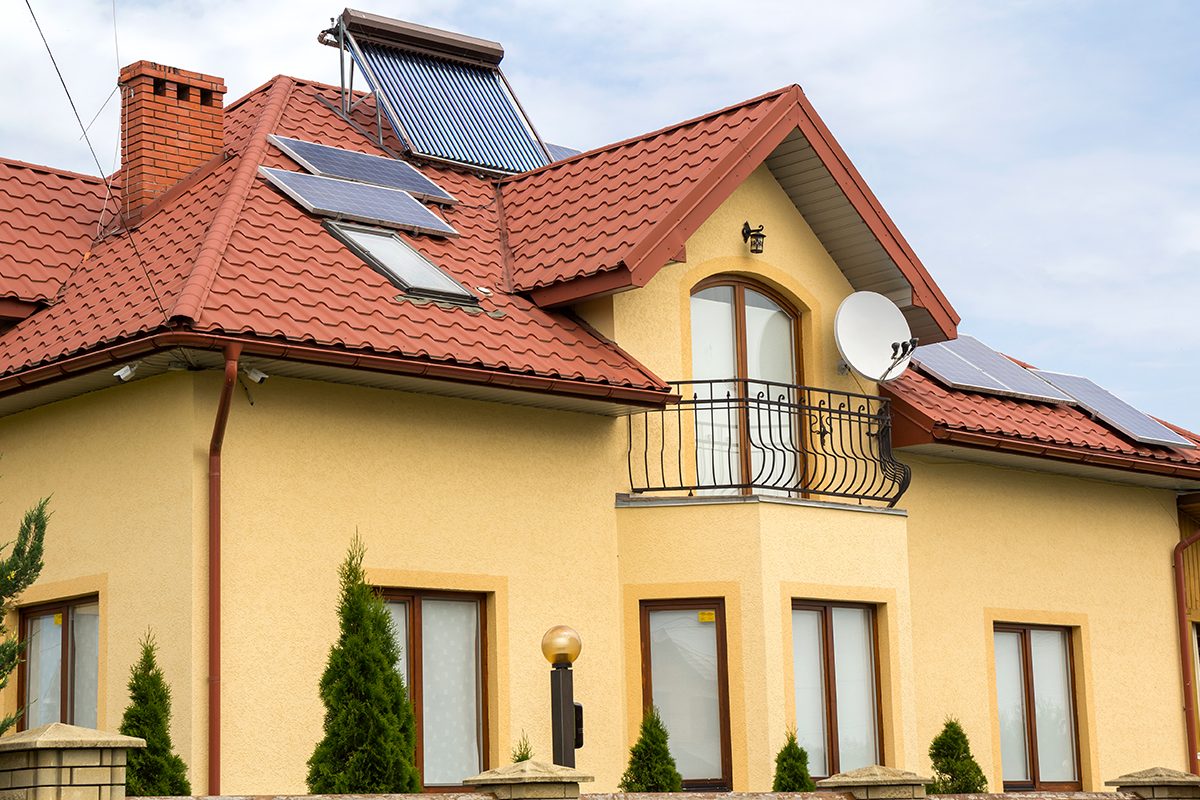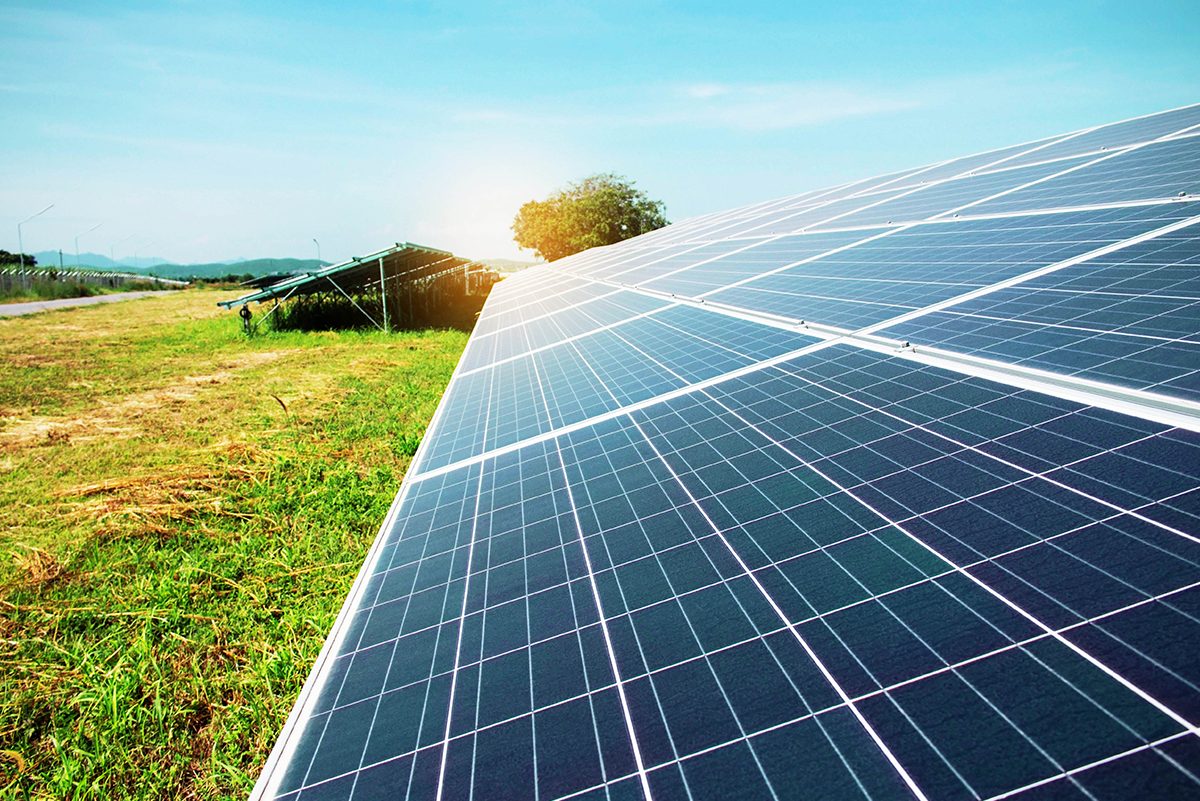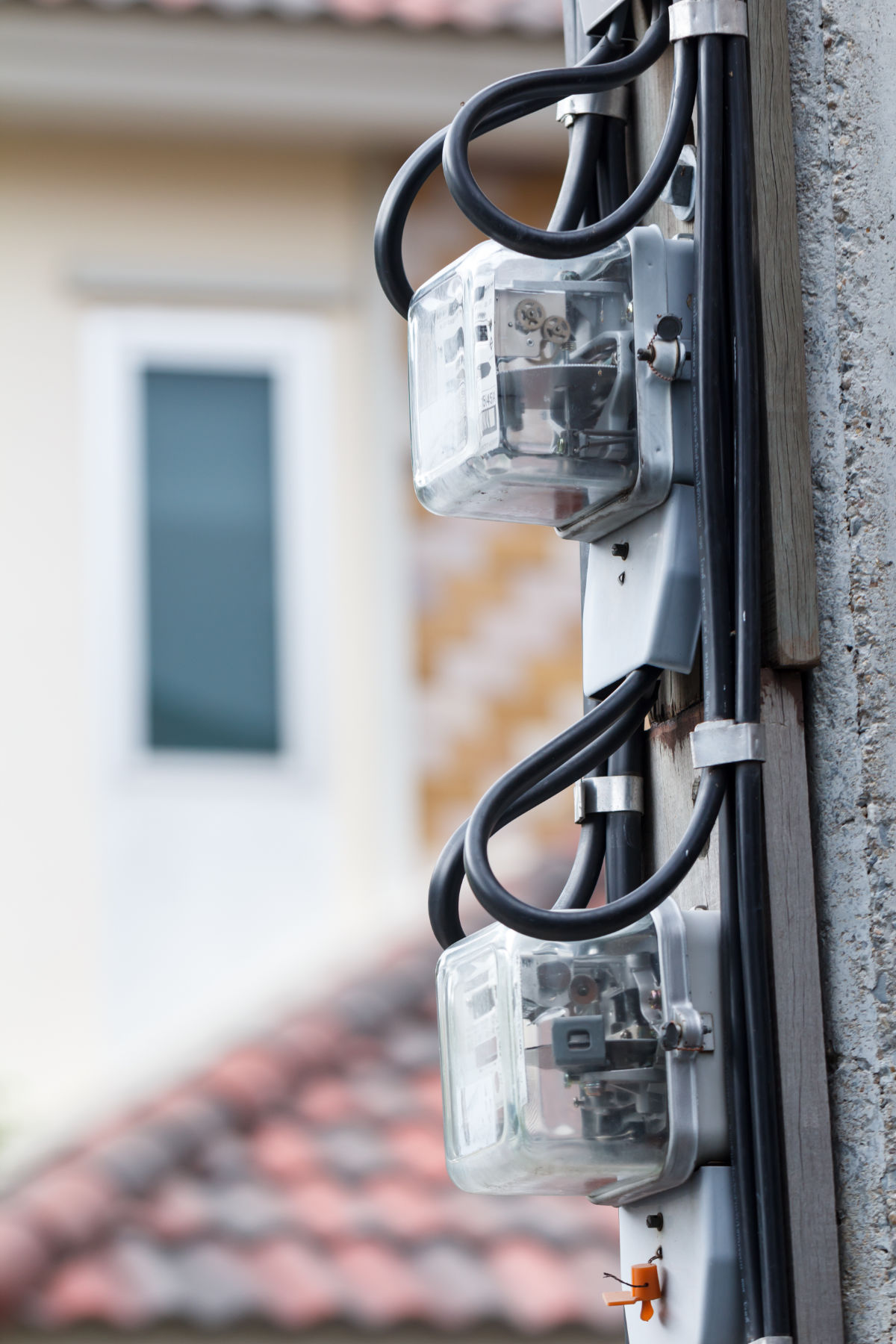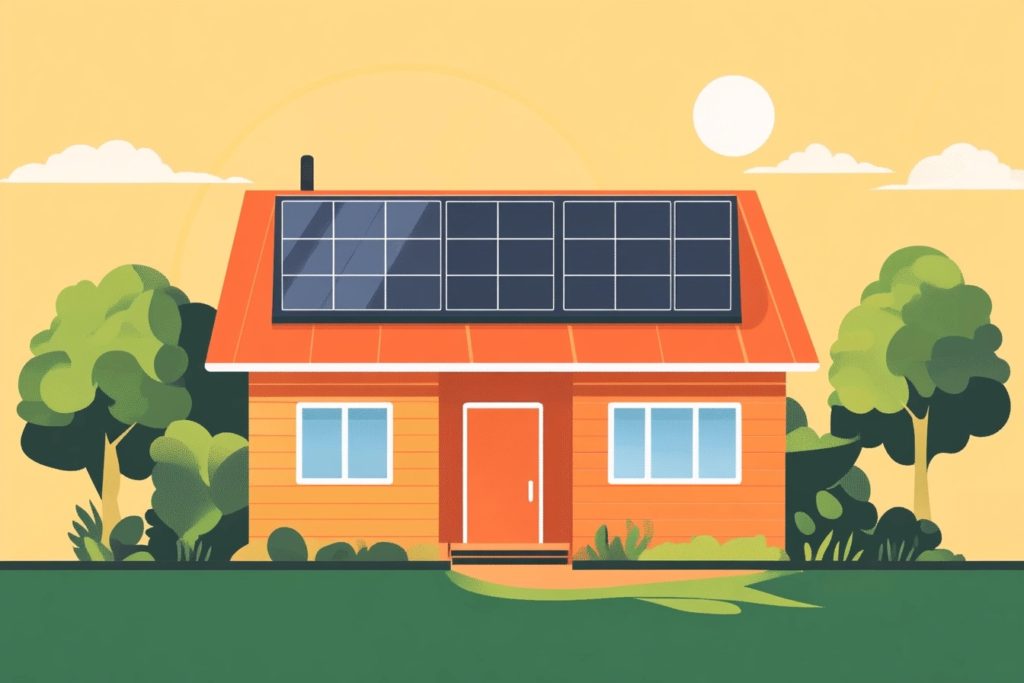Solar panels are a great way to harness renewable energy and reduce your carbon footprint. However, to ensure they operate at peak efficiency, it’s essential to keep them clean. Dust, dirt, pollen, and bird droppings can accumulate on the panels and significantly reduce their ability to absorb sunlight. Here’s a comprehensive guide on how to clean your solar panels effectively and safely.
Step 1: Safety First
1. Turn Off the System: Before you start cleaning, make sure to turn off your solar panel system. This step is crucial to avoid any electrical hazards. Refer to your system’s manual for instructions on how to safely shut it down.
2. Check the Manufacturer’s Instructions: Consult the manufacturer’s guidelines for any specific cleaning recommendations or warnings. Some manufacturers may have specific cleaning methods or restrictions to avoid voiding the warranty.
Step 2: Gather Your Supplies
You don’t need any fancy equipment to clean solar panels. Here’s a list of basic supplies you’ll need:
- Soft brush or squeegee with a long extension
- Hose with a gentle spray nozzle
- Bucket of lukewarm water
- Mild detergent (if needed)
- Soft cloth or sponge
- Safety harness (if cleaning rooftop panels)
- Ladder (if necessary)
Step 3: Choose the Right Time
The best time to clean solar panels is either early in the morning or late in the afternoon. During these times, the panels are cooler, reducing the risk of thermal shock or damage from rapid temperature changes. Additionally, cleaning in cooler weather helps prevent the water from evaporating too quickly, which can leave streaks or residue.
Step 4: Remove Loose Debris
Start by removing any loose debris, such as leaves or twigs, from the surface of the panels. You can use a soft brush or a leaf blower for this task. Be gentle to avoid scratching the surface of the panels.
Step 5: Rinse with Water
Use a hose with a gentle spray nozzle to rinse the panels with water. This will help remove dust and loose dirt. Avoid using high-pressure water, as it can damage the panels or the wiring underneath.
Step 6: Clean with Soapy Water
Fill a bucket with lukewarm water and add a small amount of mild detergent. Dip a soft cloth or sponge into the soapy water and gently scrub the surface of the panels. Avoid using abrasive materials or harsh chemicals, as they can scratch or damage the panels.
Step 7: Rinse and Dry
After scrubbing, rinse the panels thoroughly with clean water to remove any soap residue. Use a squeegee to remove excess water and prevent streaks. If necessary, wipe the panels with a soft, dry cloth to ensure they are completely dry.
Step 8: Inspect for Damage
While cleaning, take the opportunity to inspect your solar panels for any signs of damage, such as cracks, chips, or loose connections. If you notice any issues, contact a professional for repairs to ensure your system continues to operate safely and efficiently.
Step 9: Turn the System Back On
Once the panels are clean and dry, you can turn your solar panel system back on. Refer to your system’s manual for instructions on how to safely restart it.
Additional Tips:
- Regular Maintenance: Clean your solar panels at least twice a year, or more frequently if you live in a particularly dusty or pollen-heavy area.
- Professional Cleaning: If you’re not comfortable cleaning the panels yourself or if they are difficult to access, consider hiring a professional cleaning service.
- Monitor Performance: Keep an eye on your system’s performance. If you notice a significant drop in energy production, it might be time for a cleaning or inspection.
By following these steps, you can ensure that your solar panels remain clean and efficient, maximizing their energy production and extending their lifespan. Happy cleaning!
Solar panels convert sunlight into electricity through a fascinating process called the photovoltaic effect. Here’s how it works:
The Photovoltaic Effect
At the heart of solar energy conversion is the photovoltaic (PV) cell, the basic building block of a solar panel. These cells are typically made from silicon, a semiconductor material. When sunlight strikes a PV cell, it initiates a series of events:
- Photon absorption: Sunlight is composed of tiny packets of energy called photons. When these photons hit the PV cell, they are absorbed by the semiconductor material.
- Electron excitation: The absorbed photons energize electrons within the silicon atoms, causing them to break free from their atomic bonds.
- Electron flow: The PV cell is designed with two layers of silicon – one positively charged (p-type) and one negatively charged (n-type). This creates an electric field that directs the flow of freed electrons, generating an electric current.
- Electricity generation: The movement of these electrons creates a direct current (DC) of electricity.
From Cell to Panel to Array
Individual PV cells are combined to form solar panels, which can then be connected into larger arrays:
- A single PV cell typically produces only 1 or 2 watts of power.
- Multiple cells are electrically connected and packaged into a solar panel (or module).
- Panels can be further combined into arrays to increase the total power output.
Converting DC to AC
The electricity generated by solar panels is direct current (DC), but most household appliances and the power grid use alternating current (AC). To address this:
- Inverters are used to convert the DC electricity from the panels into AC electricity.
- This AC electricity can then be used to power homes, businesses, or fed back into the electrical grid.
Efficiency and Advancements
The efficiency of solar panels has improved significantly over time:
- In the mid-1980s, commercial PV panels averaged less than 10% efficiency.
- By 2015, this had increased to around 15%.
- Today, state-of-the-art modules are approaching 25% efficiency.
- Experimental PV cells for specialized applications have achieved nearly 50% efficiency.
Applications and Benefits
Solar energy has a wide range of applications, from powering small calculators to providing electricity for entire communities. The benefits of solar power include:
- Clean, renewable energy production with no harmful emissions during operation.
- Reduced dependence on fossil fuels and lower carbon footprint.
- Potential for significant cost savings on electricity bills over time.
- Contribution to a more resilient and diversified energy grid.
As technology continues to advance and costs decrease, solar energy is playing an increasingly important role in the global transition to clean, sustainable energy sources. The ability to harness the sun’s vast energy potential through the simple yet ingenious process of photovoltaics represents a bright future for renewable energy.
As energy costs continue to rise, finding effective ways to reduce your energy bill becomes increasingly important. At LGCY Power, we understand the value of conserving energy and saving money. Here’s our countdown our 10 favorite ways to save on your energy bill, culminating in the ultimate energy-saving solution.
10. Switch to LED Lighting
Swapping out traditional incandescent bulbs for LED lighting is a simple yet impactful change. LED bulbs use up to 80% less energy and last significantly longer, reducing both your energy consumption and replacement costs.
Does Unplugging Electronics Save on Electricity?
9. Use Smart Power Strips
Many electronics continue to draw power even when turned off. Smart power strips cut off the electricity supply to devices that are in standby mode, effectively eliminating “phantom” energy use and saving you money over time.
What runs your electricity bill up the most?
8. Install a Programmable Thermostat
Heating and cooling account for nearly half of the average household’s energy bill. A programmable thermostat allows you to set specific temperatures for different times of the day, ensuring that you’re not wasting energy when you’re not home or while you sleep.
7. Optimize Your Water Heater
Lowering the temperature on your water heater to 120 degrees Fahrenheit can save energy and reduce costs. Additionally, insulating your water heater and the first six feet of hot and cold water pipes can improve efficiency.
6. Seal and Insulate Your Home
Proper insulation and sealing of gaps and cracks in your home prevent heat from escaping in the winter and cool air from leaking out in the summer. This reduces the workload on your heating and cooling systems, resulting in lower energy consumption.
5. Use Energy-Efficient Appliances
When it’s time to replace old appliances, choose those with the Energy Star label. These appliances meet strict efficiency guidelines and can use up to 50% less energy than their non-efficient counterparts.
4. Maximize Natural Light
Take advantage of natural light by keeping blinds and curtains open during the day. This reduces the need for artificial lighting and can help to heat your home in the winter, lowering both lighting and heating costs.
3. Perform Regular HVAC Maintenance
Regular maintenance of your heating, ventilation, and air conditioning (HVAC) system ensures it runs efficiently. Clean filters, unobstructed vents, and professional tune-ups prevent your system from working harder than necessary, saving energy and extending its lifespan.
2. Use Ceiling Fans Wisely
Ceiling fans can help circulate air and reduce the need for heating and cooling. In the summer, set fans to spin counterclockwise to create a cooling breeze. In the winter, set them to spin clockwise at a low speed to push warm air down from the ceiling.
1. Invest in Solar Energy
And our favorite way to save money on your energy bill is through solar energy. Solar panels harness the power of the sun to generate electricity, significantly reducing or possibly eliminating your reliance on traditional power sources. With solar energy, you can lock in lower energy costs, potentially increase your property value, and contribute to a more sustainable future.
What’s the Most Efficient Way to Save on Electricity?
By implementing these energy-saving strategies, you can reduce your energy consumption, lower your bills, and make a positive impact on the environment. From simple changes like switching to LED bulbs to transformative solutions like installing solar panels, each step you take contributes to greater savings and a more energy-efficient home. At [Solar Company Name], we’re here to help you achieve your energy-saving goals. Contact us today to learn more about how solar energy can benefit you.
There’s no doubt that solar is making its way onto the roofs of homes across the country. People who make the switch to alternative energy not only help sustain the environment but find incredible returns on their investments. But the technology is advanced, and you might want to know a little more about how it works before you commit.
You might be asking yourself “how much does one solar panel produce?” An important question to understand how many panels you’d need to power your home. For the answer to this and more, continue reading.
How Do Solar Panels Work?
With increasing political and social demands for cleaner energy, solar panels have become a hot commodity. To understand the amount of power they produce, it’s helpful to know how they work.
Solar panels are made of a series of solar cells, which convert thermal energy into electricity. These cells are made of semiconductor material (materials that are only partially conductive) to absorb sunlight. The semiconductor materials allow the electrons from light to travel in a current to the electrical grid.
There are several types of semiconductor materials used that give solar cells different properties. Some of the features that help determine what semiconductor is used include:
- Bandgap (the sunlight wave frequency that the cell can absorb)
- Lifespan
- Cost
- Accessibility
The most common semiconductor used in residential solar panel systems is silicon. This material is highly accessible and offers an efficient bandgap. While other photovoltaic (PV) methods allow for more efficiency, their cost makes them less suitable for residential purposes (NASA uses panels with 45% power output ratings!).
How to Calculate Solar Panel Output
As children, we were probably taught to stay away from electrical wires. The consequences of doing that are so powerful, that it might even make us cautious just thinking about them. But calculating the amount of electricity generated from solar panels is pretty straightforward.
To get started, let’s figure out how many watt-hours our panel produces. For that, we need a couple of numbers:
- The wattage of the panel (watts per hour it can produce)
- The peak sun hours in the area (here’s an easy chart breaking it down by state)
To find out how many watt-hours our panel produces per day, all we have to do is multiply the wattage by the number of peak sun hours. We’ll use an example to demonstrate. Let’s say our solar panel produces 300 watts and we’re located in Utah, which has 5.26 peak sun hours:
300 watts x 5.26 peak sun hours= 1,578 watt-hours per day
Now typically for homeowners, watt-hours are read as kilowatt-hours. So for the example above, all we need to do is divide 1,578 by 1,000. This panel can produce 1.6kWh per day.
As it relates to residential purposes, we might also want to know how to figure the amount of solar power produced per month. That’s as simple as taking our daily kWh (in this example, 1.6kWh) and multiplying it by 30:
1.6kWh x 30 days = 48 kWh per month
When wondering “how much does one solar panel produce,” this equation can help us calculate its standard output. Keep in mind that the amount of wattage can differ per panel, and there are several conditions that can affect the actual solar power output rating.
How Much Does One Solar Panel Produce?
To help us calculate our watt-hours, we need to know how much wattage one solar panel can produce in an hour. Depending on the semiconductor and the number of solar cells in the panel, the wattage can differ.
Most residential solar panels on the market have between 36 and 144 cells, which range from 100w to 400w. The most common solar panels have 60 to 72 cells for about 250w to 300w.
The PV tactics (or semiconductors used) can also affect the amount of power produced. The two main types of solar panel PV include:
- Monocrystalline, which is made of a single silicon crystal
- Polycrystalline, which uses a blend of several silicon crystals
Monocrystalline panels are often more efficient than polycrystalline. We can expect monocrystalline panels to produce 2-7% more energy, which adds up the more cells a solar panel has.
Conditions That Affect the Amount of Energy Produced
We would love for our solar panels to produce their max capability as determined under standard test conditions. Inevitably, however, there are conditions that make them less efficient.
In fact, most panels only reach 20% efficiency. When determining how much power your panel can produce, consider these factors:
Solar Panel Position
The orientation of the solar panel in relation to the sun makes a huge difference in the amount of energy captured. If sunlight can’t directly reach the solar cells, they can’t absorb it well.
When positioning a solar panel, think about where the sun is located. Every state is north of the equator, meaning the sun will always be on the south side of homes. However, homes in Florida or Hawaii will have the sun overhead more often than homes in Alaska, so consider the angle at which the panel is positioned.
Location
We touched on this a bit earlier, but the location is important in determining the number of peak sunlight hours a panel is exposed. Geographic features such as mountains and lakes, as well as latitudinal (the lines that go horizontal) location can affect the amount of sunlight a place receives.
Here’s an example of how much this matters. Panels in Illinois (with 3.1 peak sun hours) will need over twice as much wattage as panels in Nevada (with 6.4 peak sun hours) to produce the same amount of solar power.
Shade
Shade can affect the output of a panel way more than expected. If even one solar cell is covered, it can drastically reduce the output of the entire panel.
This happens because every cell of the panel is connected to the same current. Essentially, the shaded cell acts as a clog in the current; unshaded cells can only push an amount of energy that will fit through the clog. This results in a panel that can only produce as much power as its weakest solar cell.
Temperature
Believe it or not, solar panels actually lose efficiency in extreme heat. When considering adding a solar array, keep in mind that hot, summer days can drop solar production by as much as 10%.
To accommodate for hot areas, a couple of methods help keep temperatures cool. Proper solar installation allows a few inches of roof space for airflow. Additionally, different colored panels other than black will result in less heat absorption.
How Big of a Solar Panel System to Power My House?
Many homeowners look to solar as an alternative energy source. Several panels are strung together to create a solar array which varies in size depending on the amount of power needed. We can determine our energy needs based on our location and monthly power usage.
So if we’re located in Utah (as in our first example) and we use 760kWh per month, we would want 4.8kW of solar to completely cover our usage. That’s a solar array of 16 panels producing 300w each.
Of course, as briefly mentioned earlier, some places might need significantly more wattage to cover their needs. On average, residential solar arrays use 6kW of solar to cover their electrical usage.
How a Residential Solar Panel System Can Save Me Money
Many people are adopting solar systems for their power supply, not only because it’s environmentally friendly but also because it’s saving them money on their utility bills. In fact, solar arrays can save homeowners nearly 100% on electricity.
For those that opt into power storage, their savings can even turn into earnings. Residents in some cities can connect their solar system to the area’s power grid and utility companies will pay for excess power.
The biggest concern people have with switching to solar is the cost of installation. But with the rapidly growing market, even that is becoming affordable. With federal backing and state incentives, people can cut the cost of installation by over 25% or more.
Where many people find significant value is in their long-term investment. While they’re paying upfront installation costs, the system can go with little maintenance for up to 25 years. Over the life of their system, most people will find substantial savings.
How Much Can You Expect to Pay For Solar?
Now that we understand the question of how much does one solar panel produce, we can start to determine how big of a solar array we need to power our home. Regardless of the size, however, there are incredible savings to be earned.
For help estimating how much a solar array might cost us, we recommend our personalized solar estimate. As one of the top-rated solar companies, we’re committed to connecting you to the best solar options in the country.
The state of Utah alone has invested over $4 billion in solar energy, as there’s enough solar to power over 500,000 throughout the state. With that said, many remain skeptical about solar panels, particularly regarding the noise they make.
So are solar panels loud? What kinds of noise do solar panels make? Are there ways to quiet your solar panels?
That’s what we’re here to look at today. Read on to find out more about whether solar panels are loud and what goes into modern solar panels.
How Do Solar Panels Work?
There are different solar panels, but the ones you’re most likely going to see in residential settings are photovoltaic, or PV panels. These convert light from the sun into electrical energy.
PV panels are commonly used in solar panels and work by absorbing the sun’s energy through the PV cells in the panel itself. Photons, electrons, and silicon eventually combine to make a reaction to produce a current.
PV cells are grouped and combined in a back sheet. Layers of glass make up a solar panel, and multiple panels are put together to produce a high amount of power.
In short, panels take in light from the sun and use different reactions to convert it to light. But do these reactions actually make noise?
So…Are Solar Panels Loud?
So are solar panels loud? The short answer is: technically, no.
Solar panels themselves emit little, or really any noise. They don’t have any moving parts that turn or churn to make any kind of noise. Once installed, they’re there to take in sunlight and convert it all to energy.
There are different aspects of both installing and maintaining solar panels that may cause noise. Let’s go over those factors here:
Installation
Most solar panels are installed by attaching them to a mounting rack and bolting that rack to the roof. The panels themselves never touch the roof, so no sound is made through direct contact.
As such, the installation process might be a bit noisy. After that, incorrect installation may cause instances where unwanted noise is created. Panels that are poorly secured often create noise on windy nights.
Wind
As we just discussed, improper installation can produce some noise from your solar panels. With that said, the wind often creates noise even if your panels are properly fitted.
The natural gap between the roof and the base of the panel creates a “tunneling” effect that might make noise on windy nights. If the roof is uneven, this issue is more pronounced.
On very windy nights, the wind might catch the edge of the panel and emit a creaking noise from the roof itself. This is quite rare, however, as contractors know how to secure panels properly even in the event of wind.
Inverters
Before we discuss how inverters make noise, it’s important to understand that these are essential pieces of equipment that turn AC power into DC power. A solar panel inverter is crucial to power your home.
It manages the power from the solar panel to channel seamlessly to and from the grid. Inverters have fans that keep the entire system cool, especially larger inverters for bigger houses.
When installing your solar panels, ask about solar panel inverters and whether you need to worry about them creating too much noise.
You don’t have to worry about inverters making noises at night, either. Since solar panels do most of their heavy lifting in the daytime when there’s sunlight, inverters won’t bother you in the evening.
What If I Hear Noises From My Solar Panels?
Suppose you hear some kind of noise coming from your solar panels. Listen closely to see if you can tell exactly what the noise is.
Is it a creaking noise? Is it vibrating? Is it just the wind hitting up against your roof?
Does your solar panel dip in production when you hear this noise? If so, the panels might take on too big of a workload. In that case, contact your installer about how to proceed.
Creaking Noise
You can get the installer to check the screws and bolts to see if everything is nice and tight. There may also be loose strings and other connections causing an abundance of noise.
Wind
Sometimes wind going through the space between your panels and the roof it rests on is too much. You can fit rubber panels or something similar to block the wind’s passage.
It’s good to know whether you should expect this problem before installing. It’s going to be a lot easier to take care of it at the start rather than retrofitting your panels when you hear some noise at night.
Repositioning the Inverter
Sometimes your inverter is just in an inopportune location relative to your home. The best inverters are virtually silent, but some might still make a little bit of noise.
Garages and basements are common areas where you might place your inverter. The further it is from your living spaces, the quieter your solar panels can work.
Understanding Solar Panel Noise
Asking “are solar panels loud?” is completely valid considering the investment you take on when you install them for your home. Use this guide to help you understand solar panels and how they can make noise.
Are you looking for a reliable solar panel company? Contact us today and we’ll get you started on a solution right away!
Did you know that around the globe, the annual off-grid solar market serves 420 million people?
As the advent of solar energy has led many Americans to install solar panels on their roof, the number of solar panels in circulation in the off-grid market has also increased. It’s much easier than ever before to go off the electrical grid with your grid homes and have endless power wherever you live.
This goes for individuals with mobile homes or tiny homes that travel around, as well as individuals who simply want to be disconnected from the local power grid.
Are you interested in taking your house solar using an off-grid system? Are you wondering how many solar panels to run a house off-grid you’ll need?
In this article, we will help you with calculating the number of panels you’ll need using the amount of electricity your system uses.
What Is Solar Power?
Solar power is the process of turning the energy from the sun into heat or electricity. Solar energy is the most abundant source of renewable energy, and the United States has some of the best solar resources in the world.
Solar technologies can use this energy to do a lot of different things, like making electricity, lighting up a room, or making it more comfortable. They can also work to heat water for home, business, or industrial use.
This can be used to power all types of devices, small electronics like remotes and construction signs, to residential properties and large businesses. Depending on the use, each of these can be an efficient replacement for the existing energy production and storage system.
How Does Solar Power Work?
Solar PV panels are made up of many small photovoltaic cells. Photovoltaic means that the cells can turn energy from the sun into electrical energy. These cells can be stacked together to scale upward and create a larger output of energy.
Most of the time, these cells are made of silicon, which is a semi-conductive material that can conduct electricity while keeping the electrical imbalance that is needed to make an electric field.
Basic Panel Technology
Sunlight will strike the semiconductor, and the energy is issued out in terms of photons. The photons then knock loose nearby electrons, which are then free to move around in the cell. Polar semiconductors are placed between each other in the solar cell to create an electric field (see the image to the left for a visualization).
This electric field pushes the free electrons in a certain direction, towards the metal plates that line the cell and make it conduct electricity. This flow is called an energy current, and how much electricity each cell can make is based on how strong the current is.
Once the free electrons hit the metal plates, the current is sent into wires, which lets the electrons flow like they would in any other way electrical system.
As the solar panel creates an electric current, the energy flows through a series of wires to an inverter. Even though solar panels make direct current electricity, most buildings need alternating current electricity to run. The job of the inverter is to change the electricity from DC to AC so that it can be used in everyday life.
After the electricity is changed into a form that can be used, it is sent from the inverter to the electrical panel or breaker box and sent into the building to be used where needed. Solar energy can then be used to easily power lights, appliances, and other electrical devices.
Through the utility meter, the breaker box sends a surplus that is not used back to the grid. The utility meter keeps track of how much electricity goes from the grid to your home and back again.
Giving Back
When your solar energy system produces more electricity than you use at home in the average day, this meter actually turns backward. Through a process called “net metering,” you get credit for the extra electricity you make.
When you need more power than your solar array can give you, you can get extra power from the grid through this meter. This keeps everything running normally.
Unless you have a storage solution that lets you live completely off the grid, it’s possible you will need to get some energy from the grid, especially at night when your solar array isn’t producing. But a lot of this grid energy will be made up for by the extra solar energy you make during the day when you aren’t using as much.
How Much Power Can Come From One Solar Panel?
There are many different kinds of solar panels for homes, and not all of them are the same. And not all of them make the same amount of electricity.
Solar panels are rated by how many watts of electricity they make. More power will be made by your solar installation if the wattage rating is higher.
The power output of most residential solar panels ranges from 250 to 400 watts, depending on the size of the panel and how efficiently it turns sunlight into energy. Even though higher power ratings are better, power output is not the only way to judge how well a solar panel works.
For example, two solar panels may both have an efficiency rating of 15%, but one may produce 250 watts of power while the other produces 300 watts.
The higher output may just be because the 300-watt panel is bigger, not because it is more efficient or has better technology. So, panel efficiency is a better measure of how well solar panels meet your energy needs than just the amount of power they produce.
What Is Off-Grid vs. On-Grid
How does an off-grid system compare to an on-grid system? Here are the main differences:
Off-Grid
Even in the middle of winter, when there is less sun, an off-grid solar system is sufficient to make enough electricity for a home’s needs. But since an off-grid solar system doesn’t connect to the electricity grid, it needs batteries to store energy.
Because batteries and inverters are so expensive, off-grid solar systems are usually more expensive than other options. Because of this, they are usually only used in more remote areas that are far from the grid. Still, the price of batteries continues to go down in most regions, so even in cities and towns, the number of people who want an off-grid solar system is rising.
Off-Grid Pros
- A solar system like this can work without being connected to the grid.
- They make enough power that it can be stored and used at night.
- These are good for places that are far away and don’t have access to the power grid.
- The power supply won’t be affected by shutdowns or problems with the local infrastructure.
On-Grid Solar System
On-grid solar systems are the most common way for homeowners to use solar power. These systems are hooked up to the public electricity grid and use solar inverters. They don’t need batteries.
If you have more solar power than you need, you can sell it to the electricity grid. When you sell energy, you usually get utility credits or other compensation.
Solar inverters are an important part of a home solar energy system. They take the electricity that your solar panels make and turn it into a form that your appliances, lights, and other electronics can use.
Unlike an off-grid solar system, these can’t work or make electricity when the power goes out. This is for safety reasons.
Since blackouts usually happen when the electricity grid goes down, if the solar inverter sent power into a broken grid, it would put the people who were fixing the network’s problems in danger.
Most solar systems that are connected to the grid and have batteries can disconnect from the grid and still provide some power during a blackout. This is called “islanding.”
On Grid Pros
- On-grid solar power systems are very cheap and easy to set up.
- You can get your money back if you pay off your electricity bills in about 3 to 8 years. This will take less time if you use incentives
- The extra energy that the system makes can be used to make money for the people who live there.
- Solar power systems are a clean, renewable source of energy that can be used over and over again. Depending on the type of system you choose, they can help you in many ways.
Knowing the pros and cons of both on-grid and off-grid solar systems will help you choose the best one for your needs. With the right solar system and the right installation, you can get clean, cheap energy without having to worry about problems with maintenance.
How Many Solar Panels to Run a House Off-Grid: The Cost
For this example, let’s say you have some 300-watt solar panels and want to power your home with them. You don’t have access to the grid, so the best way to meet your energy needs is to install off-grid solar on your home.
Let’s say that each panel on your roof gets about 8 hours of sunlight per day. A 300-watt solar panel that gets 8 hours of sunlight a day will make almost 2.5 kilowatt-hours of electricity each day. If we multiply this by the number of days in a year, we get about 900 kilowatt-hours of power from the sun. In short, each panel will give off 900 kilowatt-hours of electricity every year.
How much power does your house take up? Most data show that a typical American home of 2,000 square feet uses about 11,000 kilowatt-hours of electricity each year.
So, if we divide our total energy use by how much one solar panel is expected to produce, we can see that about thirteen panels of this size would be enough to power a home of that size.
Compare that to your average utility bill per kilowatt hour to see the cost and how much you could save.
If you have a small house or are powering an RV, you won’t need as many solar panels because you won’t need as much energy.
Solar Incentives
The government offers a tax credit that can be used to pay for part of the cost of a solar photovoltaic (PV) system. It can be claimed on your tax return each year. There are also credits for other types of renewable energy at the state and local levels.
The system must be put to use during the tax year and power a home in the United States. The IRS doesn’t have a clear definition of what it means for something to be “placed in service,” but it has said that it means the installation is done.
The government extended the credit at the end of 2020. Systems installed in 2020-2022 get a 26% tax credit, and systems installed in 2023 get a 22% tax credit.
A 30% tax credit was available for systems installed before December 31, 2019, but this has ended. The tax credit will end completely in 2024 unless Congress decides to keep it going.
Update: In August 2022, the solar tax credit was increased to 30% and extended through 2032.
Going Solar With Off Grid Homes
At the end of the day, if you’re wondering how many solar panels to run a house off-grid you will need, the answer is probably between 10 to 15. This will depend on how large your home is, how large your panels are, the panel material, and your average daily consumption. Most homes will be able to go off-grid with a number of panels that can easily be mounted on or near the home’s structure.
If you’re interested in learning more about how you could go solar with an off-grid home, please contact us today.
You probably don’t spend much time thinking about your electric meter, and that’s fine.
But, when you go solar, you want to know about a net meter, which is installed so your utility company can track how much solar electricity is sent to the grid.



